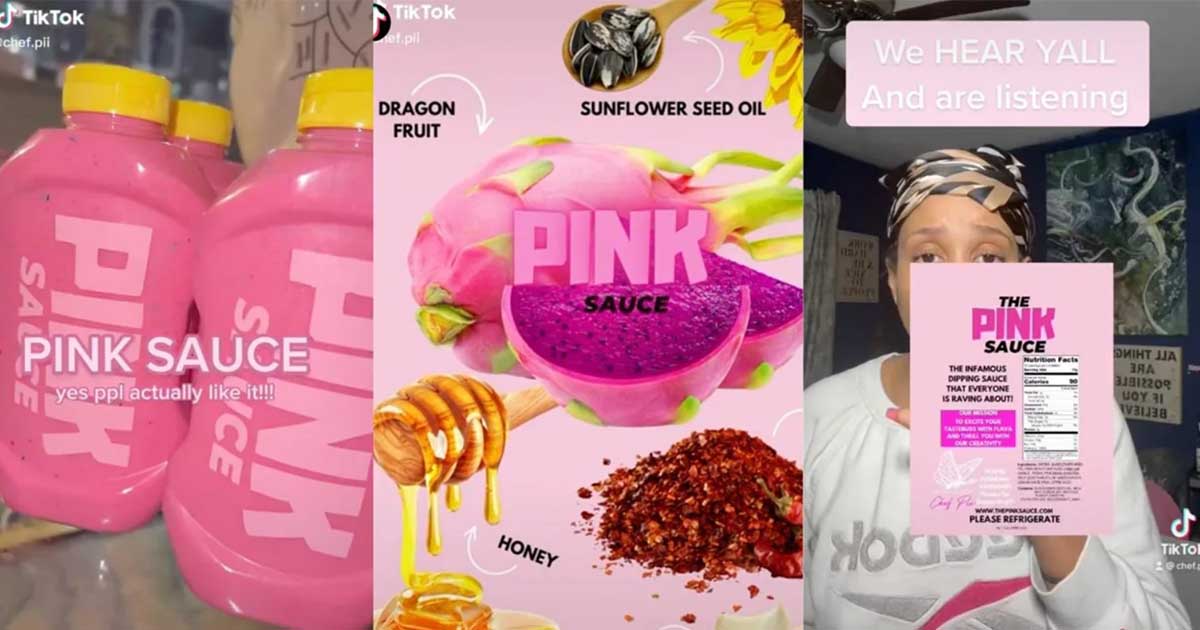Top Stories
NFT Scam: Ponzi Scheme Reborn
Published
3 years agoon

While many digital artists’ lives have changed for the better with NFTs, some see them as the worst that has happened to the internet. Non-fungible tokens, more popularly known as NFTs, are images, videos, audio files, game items, or even memes that people buy with cryptocurrency. You can find them being sold on various auction websites or via the artists/creators.
Basically, an NFT is a license of ownership of digital files that can not be traded. They differ in price ranges, but there are a few that have reached astronomical prices in the millions of dollars. Despite this, the NFT owner does not actually own the NFT.
The buyer can only claim a certificate of ownership that says they own a one-of-a-kind art piece in digital form. The buyer’s name will be written on Blockchain as proof of purchase. This is what many art collectors’ beef is about, that the art can easily be replicated.
NFT buyers are now facing mockery from non-believers. We can now see these skeptics displaying screenshots of the supposedly “one-of-a-kind art pieces.” They shame the NFT owners by saying that what they only paid for is a piece of paper that states ownership, nothing more, nothing less.
Additionally, cryptocurrency, with which NFTs are paid, is doing damage to the environment via its mining. Cryptocurrency mining uses a tremendous amount of energy from processes that emit a ludicrous amount of greenhouse gases. It is a terrible process that is not sustainable and harmful to the atmosphere.
The continued popularity of NFTs will definitely result in a climate crisis that the world is already battling against. And aside from the environmental impact, these pointless licenses of ownership, the art is described as visually unattractive, to say the least.
One look at the Bored Ape Yacht Club or the CryptoPunks, it’s mind-boggling that people have paid obscene amounts of money for them. You won’t even know what’s stolen, copied, or AI-generated when buying them.
NFT Scam: The Collectors and Marketplaces
NFT collectors also have begun to display the annoying behavior of being insufferable crypto bros on the internet. Claiming NFTs “as the future of art,” they also engage in using discriminatory remarks and show off their clout-chasing attitudes online. An incident of racism was recently found in the form of the NFT collection called the “Meta Slave” collection.
This collection consists of 1,865 portrait photographs of African Americans. It was given the title “Meta Slave,” an assigned number, and a roughly $30 (or 0.01 ETH) price tag. Good thing, though, the collection was removed from OpenSea and rebranded with a new name, “Meta Humans.”
The NFT marketplace seems to be copying real-life art auctions. And just like it, the NFT landscape is used as a place to engage in money laundering activities. Because of this, the U.S. Treasury Department identified NFTs as an area of concern. The very nature of the marketplace deems it likely to happen even if there are still no documented cases of incarceration.
So, instead of cryptocurrency mining and collecting NFTs as art pieces, let’s all give artists the chance to earn by commissioning them to create real art. A one-of-a-kind art piece will benefit both the collector and the artist. Commissioned art is more expensive. However, most artists who sell on a commission basis sell their works at a lower price than NFTs.
If someone wants to support the arts and the artists, they should not care about the exclusivity of an art piece. On the other hand, artists should offer subscription services, set up booths at art conventions, and sell their art online.
You may like
Technology
Virtual Reality Exhibit Carne Y Arena: The Refugees’ Plight
Published
23 hours agoon
July 17, 2025
In some ways, we are all familiar with the human plight of refugees and immigrants. Still, sometimes, it’s easy to turn a blind eye when we’re all preoccupied with our daily lives.
Carne y Arena, an immersive virtual reality experience about the human condition of immigrants and refugees, was available at KANEKO on Sept. 10, 2022. Kaneko collaborated with Emerson Collective, PHI Studio, and Legendary Entertainment to bring CARNE y ARENA to Nebraska after several sold-out runs in the United States and abroad. The exhibit pays tribute to the migrant’s border crossing in a way that emphasizes the value of being mindful of your surroundings and paying attention to what is happening around you.
It is the brainchild of Academy Award-winning author and director Alejandro G. Iñárritu. Carne y Arena was the first VR experience chosen as part of the festival’s Official Selection when it debuted at the 70th Festival de Cannes in 2017.
Iárritu said that his conversations with numerous immigrants from Latin America who managed to cross the border served as the foundation for Carne y Arena.
“During the making of this project, I had the privilege of meeting and interviewing many Mexican and Central American refugees,” Iñárritu said in an interview shared by the Nasher Sculpture Center.
The director said the refugees’ life stories “haunted” him, and so he invited some of them to collaborate with him on the project. Iñárritu says he intended to experiment with VR technology to explore the human condition and, in doing so, break the dictatorship of the frame—or the perspective within which things are observed. He wanted to claim the space to allow the observer to go through a “direct experience walking in the immigrants’ feet, under their skin, and into their hearts.”
The Interactive Experience at Carne Y Arena

Carne y Arena is an interactive experience so that visitors can use their hands to feel the migration process and learn about critical moments that led up to that point in a migrant’s journey.
According to the Nasher Sculpture Center, the immersive experience was a 20-minute solo journey that focuses on a multi-narrative virtual reality sequence. In fact, it’s based on true accounts as reenacted by Central American and Mexican refugees. That said, the lines between subject and bystander are blurred and are bound together through the state-of-the-art immersive tech. Just as visitors walk through a vast, sand-filled space, they witness a fragment of a refugee’s personal journey.
Docubase also described the virtual experience in detail. According to their account, there were three sections available during the experience. Participants left their shoes and other things in a locker in the “detention room”. After donning a headset, headphones, and a backpack device, participants entered a sand-filled, dark, and spacious area where they experienced a 6.5-minute virtual reality scenario that took them to the Chihuahuan Desert. Participants in the VR experience joined a group of migrants escorted by a coyote across the border into the US. In a different chamber, a video art installation reflected the experiences of migrants and refugees who fled El Salvador, Honduras, Guatemala, and Mexico, making up the third part of the experience.
Throughout the run of Carne y Arena, virtual and live programming took place, with additional community partners presenting content and events related to their exhibitions and programs. The exhibit areas were designed to allow only one person at a time to move through them, limiting encounters and respecting distances safely and comfortably.
Kaneko also mentioned that the exhibit was unsuitable for minors under 13.
Top Stories
What Is Tiktok Pink Sauce? The Viral Condiment, Explained
Published
1 week agoon
July 11, 2025
TikTok’s pink sauce went viral. What’s going on?
TikTok creator Chef Pii is the connoisseur behind a mysterious pink sauce that has exploded over the internet, resulting in discourse and memes. The narrative is as odd as the so-called sauce, and it continues to perplex internet detectives and users alike.
What is TikTok Pink Sauce?

On June 11, Chef Pii, a Miami-based private chef and social media influencer, posted a short TikTok of herself dipping a chicken tender into a bowl of bright pink sauce. That one video garnered more than 755,000 views. That’s how the journey of a product she invented called “pink sauce” started.
The TikTok creator released videos featuring the sauce, trying it with different foods, and showing the packaging. According to the videos, the sauce is priced at US$20. It quickly became a craze. But this is mainly because Chef Pii refused to share how the sauce tasted. She often had other reviewers taste it, but she provided cryptic answers on how it tastes.
In late June, Chef Pii released a TikTok video addressing that concern. A day later, she revealed the ingredients, posting a graphic outlining each: dragon fruit, sunflower seed oil, honey, chili, and garlic.
Nutritional labels – and errors
Creator @sseaansvv recently raised further questions, investigating deeper the pink sauce saga. The TikTokker called “Pink Sauce Lady” for errors in her nutritional label. They also claimed that “there are not enough preservatives” within the sauce “to make shelf stable.”
Sean SVV also wrote in her second video’s caption, “I’m genuinely rooting for her to get a license, fix the errors before selling it legally.”
Another TikTokker, @annareportsnews, also posted a video the same day saying that the serving size per container is unrealistic. She also mentioned that the label doesn’t specify that the sauce should be refrigerated.
America’s Food and Drug Administration (FDA) mandates manufacturers of dressing and condiments to apply for registration. The FDA sets standards on labels, testing methodologies, manufacturing practices, and scientific protocols.
In April 2022, FDA issued the revised guidelines for nutritional fact labels on food and drink products. Serving size is among the updates for the label. However, the FDA doesn’t allow pre-market approval for food products.
A few days later, Chef Pii announced in a video that they were fixing the issues.
She apologized for the label errors and stressed fixing the nutritional labels for all future bottles of the sauces. She also emphasized that she appreciates the support her sauce has received and that she is operating a small business and is trying to reduce the price of the sauce.
The nutritional label is also available for viewing on her site, which previously didn’t seem to be the case.
Twitter Memes About the Controversial Pink Sauce
Recently, the internet has become crazy with pink sauce. People post everything from memes to analysis, while others express the desire to try the sauce. On Twitter, “Pink Sauce” is currently trending.
Links:
cause of death: pink sauce
— Katherine Krueger (@kath_krueger) July 21, 2022
how do i know pink sauce isn't just pepto bismol
— ari (@arianeanindita) July 21, 2022
Just learned about pink sauce and I love everything about it. The fact that it's apparently just ranch with red food coloring. The label that doesn't fit the bottle stuck on with glitter glue. The misspelling of vinegar on the ingredients. The fucked up nutritional information <3
— parker!!! (@anti90smovement) July 19, 2022
Even Netflix has posted about the sauce.
Just got my pink sauce. I know what I'm doing tonight! pic.twitter.com/G1Rf7pVLSr
— Netflix (@netflix) July 21, 2022
But the story does not end there.
Chef Pii took to Instagram Live, YouTube, and TikTok to answer users’ questions. Likewise, she spoke to various media outlets, such as NBC, Washington Post, and Buzzfeed, to defend her unique product.
During her Instagram live, the chef said, “What do you mean by FDA-approved? But, I don’t sell medical products. The “Pink Sauce” isn’t a medical product and it don’t contribute to your health.”
That response stirred Twitter again, causing “F in FDA” to trend across the app.
Selling a “popular” food product while not knowing that the F in FDA stands for Food is wild.
— Bianca (@mz_bee726) July 26, 2022
On July 27, Chef Pii emailed all pink sauce customers about the new terms and conditions. The email addressed the Pink Sauce Supporters and said they are working to fix the issues surrounding allegations and claims against the condiment.
Chef Pii also explained that she is now cooperating with the FDA and the Florida Department of Agriculture and Consumer Services. And she is waiting on official approval for the sauce and updating the packaging to ensure “preciseness.”
And for other stories and news, read more here at Owner’s Mag!

Merck is currently in talks to acquire Seagen, a biotech company. The Wall Street Journal reports that the transaction is valued at $40 billion. And what happens if Merck acquires Seagen, and how would this acquisition benefit cancer research and treatment? Read more about the Merck Seagen buyout here.
Merck Seagen Buyout
Merck and Seagen are still deciding on their share prices. So far, talks have yet to reach an agreement on $200 per share. Both companies want to settle and finalize their deals before Merck announces its quarterly earnings on July 28. At the time of writing, Seagen’s stock was at $176.19.
With an estimated market value of $235 billion, Merck is looking to expand its presence in the cancer treatment space. The Merck Seagen Buyout could play a major role in that strategy. Since Seagen specializes in targeted cancer therapies, the acquisition would give Merck access to a broader range of oncology products.
Shareholder reactions to the new deal are overwhelmingly positive, and the stocks have been up since talks about the deal have been made public.
But this is not the first time that Merck and Seagen have made the news. Back in 2020, they collaborated because of cancer treatments. Seagen has a drug conjugate (ladiratuzumab vedotin) which would be used in conjunction with Merck’s Keytruda.
Merck reveals that Keytruda is its highest-selling product. It’s immunotherapy for cancer.
And this deal could help Merck offset the possibility of reduced sales because it will lose patent protection in 2028.
As promising as this deal is, there could be scrutiny from antitrust officials since there might be a litigation case from the Federal Trade Commission or Justice Department.
The Seagen buyout isn’t the only deal Merck has made recently. They’ve been busy closing another deal, but with Orion too.
Seagen
As a cancer biotech company, Seagen has therapies to ensure that patients benefit from the treatment and reduce any adverse side effects. Their treatments involve the therapy attacking tumors with toxins.
Merck partnering with Seagen isn’t a bad idea considering that Seagen made $1.4 billion in sales in 2021, most of it coming from Adcetris and Padcev (a treatment for urothelial cancers).
Merck-Orion Deal
In the middle of the Merck Seagen Buyout, Merck has recently partnered with Orion for the ODM-208 and other drugs. These drugs are related to the production of steroids. Orion found how it can combat hormone-dependent cancers and further developed this inhibitor.
Their deal includes that they should develop ODM-208 and promote it to the public together. And Orion will receive a $290 million payment from Merck.
Although they’re co-developing and marketing the new inhibitor, Orion will oversee the manufacturing side.
Co-developing the ODM-208 can help Merck with its current research and treatments for prostate cancer. President and CEO of Orion, Timo Lappalainen, says that this partnership will benefit Merck’s goals of treating cancer worldwide.
Other Ventures: Merck’s Role in the Pandemic
You may have heard about COVID-19 pills, which are a form of treatment for those diagnosed with mild to moderate COVID-19. Merck introduced an antiviral COVID-19 pill to the public. The name: Molnupiravir.
The COVID-19 pill is not a replacement for a vaccination. Instead, it stops the replication of the COVID-19 genetic code and keeps the patient out of the hospital. Not yet FDA-approved, Molnupiravir has been authorized for emergency use since December 23, 2021.
And for other stories, read more here at Owner’s Mag!

Should I Buy an Electric Scooter? What You Can Learn

Best Workflow Mapping Tools for Smarter Business Processes

Top White Label Marketing Tools for Agencies: Our 10 Best Picks

Virtual Reality Exhibit Carne Y Arena: The Refugees’ Plight

Top 10 Podcast Editing Software Applications for Beginners

What Is Tiktok Pink Sauce? The Viral Condiment, Explained

Did You Drop Your Smartphone in The Ocean? Here’s How to Retrieve It

Top White Label Marketing Tools for Agencies: Our 10 Best Picks

History of the NBA: The Success Behind the Big League

Demio SaaS 2025 Review: Features, Pricing, Pros & Cons

Did You Drop Your Smartphone in The Ocean? Here’s How to Retrieve It

Virtual Reality Exhibit Carne Y Arena: The Refugees’ Plight

Best Workflow Mapping Tools for Smarter Business Processes

Gift Guide: 25 Best Gifts for Women for All Occasions
Trending
- Technology17 hours ago
Top White Label Marketing Tools for Agencies: Our 10 Best Picks
- Technology23 hours ago
Virtual Reality Exhibit Carne Y Arena: The Refugees’ Plight
- Technology16 hours ago
Best Workflow Mapping Tools for Smarter Business Processes
- Technology23 hours ago
Top 10 Podcast Editing Software Applications for Beginners
- Lifestyle6 hours ago
Should I Buy an Electric Scooter? What You Can Learn





